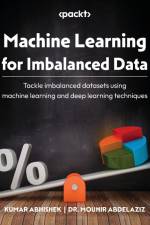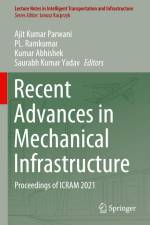av Kumar Abhishek
667
Take your machine learning expertise to the next level with this essential guide, utilizing libraries like imbalanced-learn, PyTorch, scikit-learn, pandas, and NumPy to maximize model performance and tackle imbalanced dataKey FeaturesUnderstand how to use modern machine learning frameworks with detailed explanations, illustrations, and code samplesLearn cutting-edge deep learning techniques to overcome data imbalanceExplore different methods for dealing with skewed data in ML and DL applicationsPurchase of the print or Kindle book includes a free eBook in the PDF formatBook DescriptionAs machine learning practitioners, we often encounter imbalanced datasets in which one class has considerably fewer instances than the other. Many machine learning algorithms assume an equilibrium between majority and minority classes, leading to suboptimal performance on imbalanced data. This comprehensive guide helps you address this class imbalance to significantly improve model performance.Machine Learning for Imbalanced Data begins by introducing you to the challenges posed by imbalanced datasets and the importance of addressing these issues. It then guides you through techniques that enhance the performance of classical machine learning models when using imbalanced data, including various sampling and cost-sensitive learning methods.As you progress, you'll delve into similar and more advanced techniques for deep learning models, employing PyTorch as the primary framework. Throughout the book, hands-on examples will provide working and reproducible code that'll demonstrate the practical implementation of each technique.By the end of this book, you'll be adept at identifying and addressing class imbalances and confidently applying various techniques, including sampling, cost-sensitive techniques, and threshold adjustment, while using traditional machine learning or deep learning models.What you will learnUse imbalanced data in your machine learning models effectivelyExplore the metrics used when classes are imbalancedUnderstand how and when to apply various sampling methods such as over-sampling and under-samplingApply data-based, algorithm-based, and hybrid approaches to deal with class imbalanceCombine and choose from various options for data balancing while avoiding common pitfallsUnderstand the concepts of model calibration and threshold adjustment in the context of dealing with imbalanced datasetsWho this book is forThis book is for machine learning practitioners who want to effectively address the challenges of imbalanced datasets in their projects. Data scientists, machine learning engineers/scientists, research scientists/engineers, and data scientists/engineers will find this book helpful. Though complete beginners are welcome to read this book, some familiarity with core machine learning concepts will help readers maximize the benefits and insights gained from this comprehensive resource.Table of ContentsIntroduction to Data Imbalance in Machine LearningOversampling MethodsUndersampling MethodsEnsemble MethodsCost-Sensitive LearningData Imbalance in Deep LearningData-Level Deep Learning MethodsAlgorithm-Level Deep Learning TechniquesHybrid Deep Learning MethodsModel CalibrationAppendix








